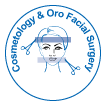From Theory to Theatre: Virtual Planning and Intraoperative Navigation in Oral and Maxillofacial Surgery
Received: 13-Sep-2018 / Accepted Date: 15-Sep-2018 / Published Date: 30-Sep-2017
37790Editorial
Primarily developed in 1990’s for neurosurgical application, navigation systems were used for the detailed visualization of brain anatomy based on the use of modern neuroimaging procedures (CT, MRI) [1]. Intraoperative navigation is comparable to the navigation system used in cars. While the position of a car is determined by satellite receivers that track waves emitted from the vehicle, an opticalbased intraoperative navigation system uses infrared cameras to detect the light waves emitted by LEDs mounted on the surgical instruments. Road maps are analogous to the CT or MRI data sets that are acquired from the patient prior to the operation. Intraoperative navigation enables the surgeon to correlate the anatomy of the operative site with the data set acquired before the operation. This makes it possible to locate anatomical and pathological structures without having to rely on subjective assessments and interpretations of image data sets.
Intraoperative navigation is an adjunct to existing surgical procedures and has gained acceptance even in oral and maxillofacial surgery with an increasing field of indications such as tumor surgery, posttraumatic reconstruction, temporomandibular joint replacement, orthognathic surgery, dental/craniofacial implantology, and complex trauma surgery. The evolution of intraoperative navigation and its application in oral and maxillofacial surgery have rapidly developed over recent years, and therapeutic indications are increased. Planning details of the surgical procedure in a 3-dimensional virtual environment and execution with real-time guidance can significantly improve precision and outcomes. Recent literature explore the clinical outcomes using computer-aided surgery, investigate the precision of various intraoperative optical navigation systems, compare several registration strategies and examine the impact of facial asymmetry on planning and reconstruction.
In oral and maxillofacial surgery one of the best examples of the benefit of intraoperative navigation is in the field of orbital surgery. Orbital fracture repair can be among the most challenging of craniofacial reconstructions. The “mirroring planning” represents an accurate method to outline the controlateral normal anatomy of the orbit onto the pathological side based on navigation guidance. Intraoperative navigation has revolutionized the conceptualization and approach to these reconstructions and has become a reliable part of the surgical armamentarium.
Computer aided software that allows "mirroring" planning coupled to navigation systems has dramatically improved surgical strategies in reconstructive surgery of the orbital region, particularly with respect to the prediction of suitable symmetric bone repositioning. So far, however, use of this approach has been limited to unilateral cases, with a non-fractured controlateral side being considered the condition sine qua non for the application of such a technique and the "mirroring" planning being performed on pre-operative CT imaging.
Navigation-assisted orbital reconstruction was first introduced by Gellrich et al. [2]. Intraoperative navigation for orbital surgery was routinely used at Città della Salute e della Scienza Hospital, University of Turin from 2013. We recently published a prospective study to demonstrate that navigation-aided complex orbital fracture repair technique improves outcome compared to free-hand traditional technique [3].
This prospective study with historical controls demonstrated a statistically significant improvement in restoring orbital volume by the use of a surgical intraoperative navigation. The use of a navigation system led to a greater volume reduction in the navigation group compared with the conventional group. Furthermore, orbital volume analysis showed that reconstructed orbital volumes in the navigation group were closer to unaffected orbital volumes than in the conventional group. There was a high correspondence between unaffected orbital volume and reconstructed postoperative volume (accuracy).
We also found that computer assisted technique improve the learning-curve especially for young surgeons. The junior surgeons achieved the same results as the senior surgeons after a short number of cases. However, surgeons had not yet incorporated this very promising technology into routine oromaxillofacial operations. The reasons probably were the learning curve for mastering the software and hardware components of the navigation systems, the inability to plan and simulate surgical procedures, the high costs, and the lack of studies that confirm the superiority of this technique respect to conventional operations.
We conclude that treatment of complex orbital fractures was considerably improved by the use of navigation system compared with traditionally treated control groups. In oral and maxillofacial surgery the demands for precision, optimal function and aesthetic results are high and the complex and distorted anatomy with loss of anatomic landmarks makes this type of surgery particularly difficult. The intraoperative control is achieved by real-time instrument tracking during surgery, keeping in mind that registration techniques used is a key element in precision of surgical navigation. With the possibility to perform preoperative planning and surgical simulation and postoperative quality control, intraoperative navigation shows, in our experience, a great value in improving the accuracy of maxillofacial surgery, reducing the operation risk and improving the predictability of the surgical procedures.
References
- Schramm A, Gellrich NC, Schmelzeisen R (2007) Navigation surgery of the facial skeletoner. Springer-Verlag Berlin Heidelberg 3: 7-8.
- Gellrich NC, Schramm A, Hammer B, Rojas S, Cufi D, et al. (2002) Computer-assisted secondary reconstruction of unilateral post traumatic orbital deformity. Plast Reconstr Surg 110: 1417-1429.
- Zavattero E, Ramieri G, Roccia F, Gerbino G (2017) Comparison of the outcomes of complex orbital fractures repair with and without a surgical navigation system: A prospective cohort study with historical controls. Plast Reconstr Surg 139: 957-965.
Citation: Roccia F, Zavattero E (2017) From Theory to Theatre: Virtual Planning and Intraoperative Navigation in Oral and Maxillofacial Surgery. Cosmetol & Oro Facial Surg 3: e103.
Copyright: © 2017 Roccia F, et al. This is an open-access article distributed under the terms of the Creative Commons Attribution License, which permits unrestricted use, distribution, and reproduction in any medium, provided the original author and source are credited.
Share This Article
Open Access Journals
Article Usage
- Total views: 2835
- [From(publication date): 0-2017 - Apr 04, 2025]
- Breakdown by view type
- HTML page views: 2038
- PDF downloads: 797
